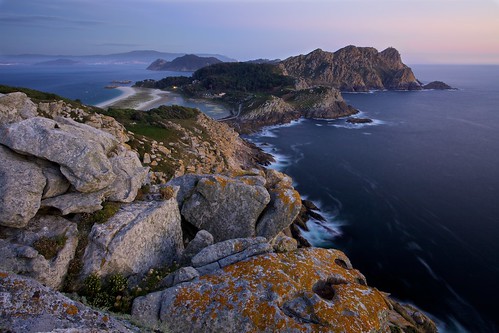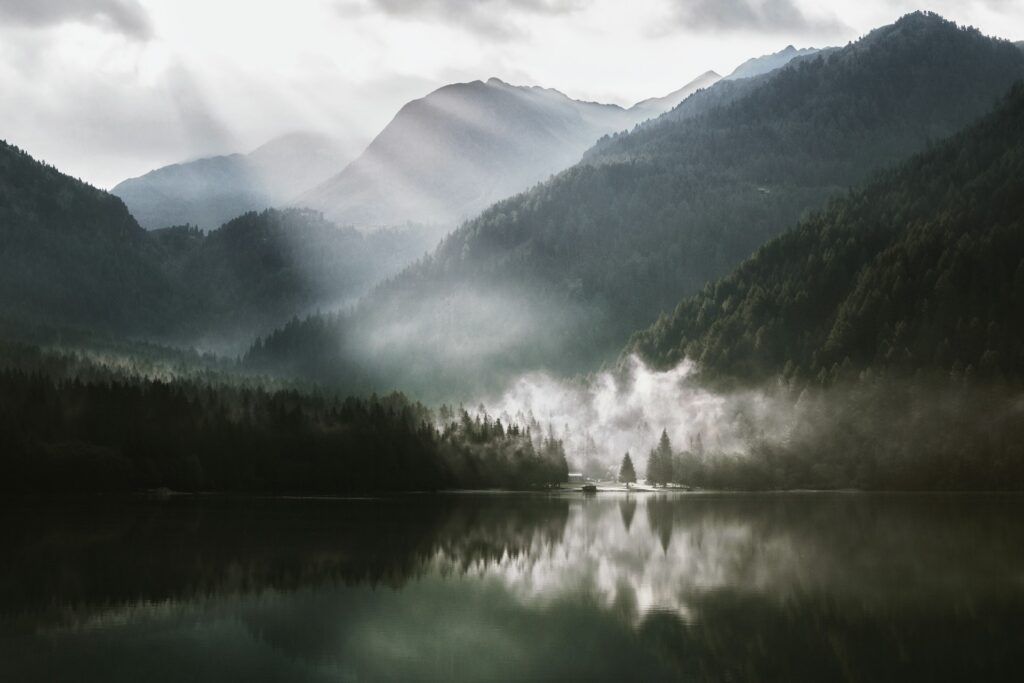There is an old convention among landscape photographers that getting an interesting foreground is a very desirable element in a lot of landscape photographs. From the shots below, you can certainly see why that would be. But what do you look for in a good landscape foreground and how do you go about shooting it well? Here are some things to think about to get your landscape foregrounds rocking.
Two Shooting Habits That Will Help You Identify Striking Landscape Foregrounds
First thing's first – make sure you know what to look for. In addition to the obvious thing of looking for interesting subjects like logs, rocks, fields etc, there are a couple of habits that can help you ensure you get the right composition for your landscape photographs.
Tilt Up and Down – A very good habit for a landscape photographer to develop starts at the moment they look through the view finder. Typically you want to make sure that you are aware of the possible shots from your location. After you have placed the subjects where you think you want them in your view finder, while still looking through the view finder, simply tilt the camera up above the scene and then down below it.
What you are looking for here is an obvious superior composition. It only takes a second and it can help ensure that you get the best composition from your location.
Get to Know Your Location – Often a landscape photographer will need to return to a scene many times for several reasons. For starters, scenes (including foregrounds) change dramatically in different lighting at different times of the day. You want to make sure you are there for the right time – and that means having been there enough to know when the right time for that scene actually is. Often it will be around the golden hour or blue hour but that isn't always the case.
Secondly, it is simply very unlikely that you will get the best out of a scene on your first exploration of the place. Landscape scenes have a habit of evolving in the eyes of a good photographer. Don't be afraid to continue going back to them.
What to Look for in Your Foregrounds for More Interesting Landscape Shots
Now, what elements do you really need to look for in your foregrounds? We will go through a few here, but they are by no means the only ones – interest is subjective and almost infinite. But these few things will get you started.
Leading Lines – A classic compositional element of landscape photographs is leading lines and foregrounds can be a massive part of that. Look at these examples and see how the lines of the foreground pull the eye into the scene.
Contrast of Texture or Colour – Something that stands out from the rest of the scene in terms of colour or texture in a foreground can often be used to good effect. This could be everything from the patterns of sand set by the wind to a series of rocks or boulders or fallen trees. These, among a million other natural things can add that speck of interest that can make a shot pop.
The fallen leaves in the waterfall by Ian Sane below demonstrate this quite nicely.
How to Capture the Foreground for Best Results
There are a few things any landscape photographers should know that really help with those foregrounds.
- Maximise Depth of Field – While there will always be exceptions to this, as with most landscape photography, you will want to maximise your deptha of field so as to have everything (as much as possible) in focus. Usually this means shooting at a narrow aperture (often between f/16 and f/22).
- Try Hyperfocal Focussing – Further to the point of trying to get as much in focus as possible is the skill of hyperfocal focussing. It is certainly worth knowing if you plan to get into landscape photography.
- Try Finding Your Lens Sweet Spot – Lastly, you should also be aware of the sweet spot for your partilcar lens where you get maximum sharpness in your images. Now, that differs by lens (use Google to find yours), and it won't always be compatible with getting a maximum depth of field, but you should have this piece of information at your disposal and make a intentional decision about it.
Now go out and start practicing. All the theory in the world isn't worth spit without some practice!










1 Comment
Great article. It definitely touches several points on what makes great landscape photos. Thanks for sharing.